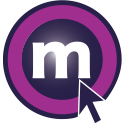Nearly every large organization now supports employee resource groups (ERGs)—in fact, 100% of the companies on Fair360’s DiversityInc Top 50 list have them. On average, those companies manage around 10 ERGs, regardless of employee size. As these employee communities continue to grow in number and influence, they’ve become essential tools for employee engagement, inclusion, and organizational performance. Affinity groups and business resource groups play a crucial role in fostering inclusivity and engagement, enhancing employee satisfaction, and positively impacting company culture.
To keep pace with this growth, companies need powerful and intuitive ERG software that supports seamless ERG management. Choosing the right software isn’t just about checking boxes—it’s about identifying the ERG management software features your ERG program managers, ERG leads, and ERG members need to run successful programs that fuel active participation and create lasting impact. Community engagement and employee community software are crucial elements for supporting ERGs and enhancing organizational culture.
Your top priorities are likely:
- Providing the best experience for ERG program leaders and erg members.
- Ensuring your results-hungry executives have the results data they need.
This article will help you delve into the realm of ERG software and explore the top five features your organization should look for to nurture and support your ERGs effectively.
Why Do ERGs Need Management Software?
All good software is designed to solve a problem. ERG software is no different.
Employee Resource Groups have a large number of moving parts. Within any program, you’ll need to consider:
- Participant enrollment
- Track Attendance
- Organize events
- Group communications
- Group management
- Skill development opportunities
- Networking
- Mentoring relationship matching
- Resource allocation
- Budget allocation
- Budget management
- Mobility tracking
- Participant polling and surveys
- Gamification and rewards
- Data tracking and data analytics
And that’s just the shortlist! When expertly designed, ERG software can help you mitigate many different issues you’ll encounter when running programs. Effective ERG management also requires aligning activities with company goals and ensuring internal compliance through strong leadership involvement. There are two, in particular, which may make all the difference for HR leaders:
1. ERG management software reduces the tech stack required
With ERG software, you can streamline ERG programs to enhance both efficiency and user experience. Without the right ERG software, leaders and participants are forced to juggle multiple apps and tools, limiting the effectiveness of employee resource groups and their engagement efforts.
While some of these tasks can be accomplished by leveraging tools you likely already have available (such as Google Sheets, Microsoft Teams, Microsoft Excel, Slack, and Zoom), there are several problems with relying on a bucket of tools to manage and participate in groups. Centralizing communication within a single platform not only streamlines collaboration among employee resource groups but also enhances visibility for HR and DEI teams, fostering a more connected and engaged workplace.
Chief among these is the lack of efficiency and the increased risk of getting things wrong. Creating a standardized approach to program management without a single source of truth via one platform quite often creates a wild, wild west of ERG management. And that means every ERG participant is getting a vastly different experience (and not always a good experience).
Additionally, managing sub-groups within larger ERGs can be effectively facilitated, enhancing collaboration among different levels of the group structure.
2. ERG software significantly reduces time investment for leaders and administrators
ERGs are commonly managed by non-executive employees who volunteer their time and energy to make these programs work. A survey by The Rise Journey found that just 6% of ERG leaders are compensated for their time spent managing and leading their ERGs. That means the overwhelming majority of ERG leaders are doing it because they care about what ERGs represent and the impact ERGs can have on the targeted populations within the organization.

Without management software, these employees may spend far more time trying to manage programs than is reasonable for a volunteer assignment that’s so often unpaid. Intentional mentoring programs can significantly enhance the effectiveness of ERGs, contributing to erg growth and helping these groups achieve organizational objectives. Meanwhile, there may be benefits to those employees’ careers from the visibility gained in taking on a leadership position. This may lead to frustrations on the part of participants and program leaders and could lead to leaders calling it quits on the role (or never signing up for ERG leadership roles at all).
One respondent to a Great Place to Work study on ERGs puts it rather succinctly:
“There’s more spent on a bagel budget than the ERG budget.”
ERGs thrive with the support of dedicated success partners who provide personalized support and best practices to ensure these groups achieve their intended impact.
The benefits of ERG software are felt across the board
ERG software houses as many ERG management and engagement tasks as possible within one platform. That way, you don’t have to worry about trying to set up multiple applications to work with your ERGs. You also don’t need to worry about managing and switching between multiple applications. Administrators, leaders, and participants can rely on expertly-designed features that improve efficiency and enhance the ERG experience through mentorship programs that focus on personalized growth and development for ERG members. Tailored guidance and structured relationships provide support and foster both personal and professional achievements in the context of diversity and inclusion efforts.
Now that we know why ERG software is necessary let’s explore some of the must-have features to include on your checklist as you investigate software. It is also important to track key metrics to evaluate the success and effectiveness of ERGs, such as engagement levels and retention rates, to gauge the impact of ERG initiatives on employee development and organizational culture.
Feature 1: Intuitive interface for a user-friendly experience
A well-designed interface can make all the difference in how efficiently and effectively ERG initiatives are managed within an organization. It can also influence how likely participants are to engage in the program.
Organizations should think of their ERGs as an engagement and retention strategy. Take AT&T, for example, which at one time reported a nearly 86% retention rate among its Black ERG program participants. When employees feel supported, they are more likely to stay. But in today’s time, support also comes from what resources you put into improving the user experience that meets participants’ high expectations. Additionally, integrating ERGs into the employee onboarding process can create a welcoming community for new hires, helping them feel connected to the organization from the start.
And why wouldn’t they have those expectations? Who wants to navigate through a convoluted system that only adds to their workload?
ERG management software, when done right, utilizes commonly accepted principles of UX design, which can include:
- Less is more
- Visual hierarchy
- Typography
- Information architecture
- Familiarity principle (also known as the mere-exposure effect)
- Personality
- Mobile vs desktop-based differences
Connecting employees around shared interests can amplify impact through employee-led initiatives and enhance engagement by fostering communities where employees can collaborate and support one another in meaningful ways.
If you plan to invest in software, you also need to ensure your ERG participants will use it. Otherwise, the ROI won’t be there. Part of convincing them to use through opting for a platform that’s designed its tool around UX design.
Feature 2: Robust data security measures for safeguarding sensitive information
Data breaches are increasingly common in the digital world today. Organizations now prioritize the security of sensitive information. This is especially important for ERG management software, which may interact with sensitive employee data, their interests, and group initiatives. Therefore, ERG management software must have strong data security measures.
If you’ve been through the process of purchasing third-party tools, you likely already know that your company’s IT team will get involved in the vetting process. They’re going to be quick to reject any tool that doesn’t mean a minimum level of security for user and company data.
Before even bringing the tool to the table, make sure that your ERG tool carries passes audits under the following security measures:
- SOC2 Type I or Type II
- ISO/IEC 27001:2013
- HTTPS over TLS 1.2 and SFTP with PGP
- AES-256
- Vulnerability Scanning and Annual Penetration Testing
- Complies with GDPR
Your ERG management software will likely integrate with other third-party tools like Slack, Zoom, Microsoft Teams, Workday, and Okta. If so, it will have already had to pass rigorous third-party security tests to gain those integrations. Nevertheless, you and your IT team should verify the tool’s security protocols and request documentation. Consider that a red flag if the company can’t produce the requisite documentation.
Feature 3: Seamless integration with existing communication and collaboration tools
One crucial feature of ERG software is its seamless integration with existing communication and collaboration tools. This integration is necessary because communication and collaboration are the primary ways participants will engage within the program. Internal communities, such as Employee Resource Groups (ERGs), play a vital role in enhancing employee engagement and satisfaction by fostering a sense of belonging and support for minority employees while promoting diversity and inclusion.
For ERGs to thrive, they must be integrated into the organization’s existing communication and collaboration channels. Not only does that help smooth over the security concerns IT teams may have, but it also reduces the time participants need to learn how the tool works.
Imagine a scenario where employees constantly switch between different platforms to access information or communicate with their ERGs. This would be chaotic, time-consuming, and counterproductive. Seamless integration with your existing communication and collaboration tech stack solves this problem.

Software solutions provide comprehensive tools to support ERGs, facilitating communication, event management, and resource allocation, ultimately contributing to a culture of inclusion and improved organizational performance.
We already mentioned some of the tools you’d likely want to integrate within the previous section. However, there could be more. As you investigate software, consider what communication and collaboration tools are widely adopted at your organization. Then, check each platform’s website to determine if it integrates with those tools.
Note that not all integrations may be listed. Some third-party app integrations are difficult or impossible, while others may be in the works. We recommend that you ask about specific tools when you book a demo
Feature 4: Customizable reporting and analytics capabilities for comprehensive insights
ERGs are now seen as a crucial part of workplace culture initiatives as companies strive to create inclusive work environments and employee communities. Still, like any program that falls under employee engagement and development, ERG metrics must align with business goals. To prove that the programs (and ERG management software) are worth the budget, executive leaders need to see the data.
The ERG software you choose should allow you to collect and analyze a large amount of data related to participant engagement. It should also connect with your HRIS system so you can get far more granular with the reporting, such as assessing retention and internal movements broken down by employee demographics. Clear event visibility into scheduled events is crucial for enhancing organizational culture, as it supports employee engagement and participation in diversity-focused initiatives.
Some executive leaders may believe all of this is possible without software. That’s usually not the case, at least not with the level of accuracy and efficiency that are needed for effective reporting.
If companies force their administrators to do manual data collection and reporting, they’ll increase the cost and decrease the efficacy of that data.
As Marcus Buckingham once wrote in a Harvard Business Review article, “Most HR Data Is Bad.” The more you can remove the human element from data collection and analytics, the better and clearer the data will be. Executive leaders who truly care about understanding the value of ERGs need to invest the money necessary in ERG management software.
When researching ERG management software, look for the right tools that have customizable reporting and analytics capabilities. You will want to assess data across each group, different populations, and the ERG program as a whole. You’ll want a software platform to give you insights into the following types of data:
- Membership
- Measure engagement
- Participant satisfaction
- Organizational impact
- Employee development and retention
- Employee promotions
- Recruitment
- Leadership involvement
The more you can splice that data, the better. However, this will all start with making sure your selected program not only integrates with existing data sources like HRIS systems but that it also gives you tools to gather data. Additionally, the software should enable ERGs to share resources effectively, thereby enhancing their functionality and impact.
Feature 5: Scalability to accommodate organizational growth and evolving needs
Focusing on scalability is particularly important for accommodating organizational growth and evolving needs. You’ll likely find that as your company grows, the number of ERGs you offer won’t change. As we noted in the intro, among the Fair360 DiversityInc Top 50 companies, the average number of ERGs is around 10. That’s irrespective of the number of employees each company had.
That means you may need to scale based on how many participants your programs can support. Some organizations do this by having different ERG chapters based on region. Others may add subgroups of other kinds. Either way, the ERG management software you use must be able to support an increasingly larger number of participants. Having scalable ERG management software is crucial for effectively managing ERGs and adapting to the changing needs of a diverse workforce. This enables program directors to enhance, grow, and scale ERGs within their organizations, ultimately improving overall employee engagement.
Scalability also involves integrating with other systems and platforms within the organization, such as HR software or communication tools, to streamline processes and improve efficiency. This feature enables a seamless transition as the organization grows and requires additional resources to support the ERG program.
A vibrant community is essential for fostering engagement among DEIB professionals and enhancing organizational culture through ERGs. This community provides networking opportunities, support, mentorship, and shared learning experiences, leading to improved employee satisfaction and a more inclusive workplace environment.
Of course, that begs the question: What does “scalability” mean for an ERG platform? In many ways, it’s the same as you’ll find with almost any other software platform. From a high level, it’s the platform’s ability to handle a larger number of participants. For example, if you double the number of users on the platform, will it crash the platform with the added number of users?
Costs should also factor into scalability. When you double the number of participants, do the costs scale up in a way that’s reasonable?
As you research tools and schedule demonstrations, be sure to ask how the platform handles scale.
Feature 6: Streamlined administration and automation for efficient management
The efficiency of your ERG management tool will be a make-or-break decision. If the tool does not reduce how much time program administrators and program leaders must spend organizing and managing groups, there’s very little point to the software.
Administrators can minimize manual intervention and focus on strategic initiatives by automating processes and tasks. This ultimately enhances productivity and drives organizational success. That applies to ERG management, where leaders and administrators, who are already pressed for time, need to organize and manage groups as quickly as possible.
This will be particularly relevant for ERG leaders, who, as we stated earlier, typically serve in unpaid leadership roles. If ERG management takes too long, it takes too much time away from their regular day-to-day duties. While their ERG management role is important and adds significant value to HR initiatives, large programs that require excessive time investment can become counterproductive.
Feature 7: Mobile accessibility to facilitate remote ERG engagement
Effective communication is crucial in the fast-paced business world, where multinational companies operate across borders and diverse cultures. However, distance can impede communication and collaboration within ERGs, hindering their ability to produce effective results.
Mobile accessibility is pivotal in facilitating remote ERG engagement. With the rise of remote work and virtual teams, the ability to connect and collaborate from anywhere in the world has become a requirement. By incorporating mobile accessibility, ERG management software empowers employees to participate in ERG activities, regardless of location.
This feature enriches communication channels, breaks down barriers, and fosters inclusivity by ensuring no employee is excluded from the conversation.
A mobile-first approach is also great for group leaders, who may need to communicate with their groups while on the go. Because today’s workforce is not working traditional hours, ERG leaders also need to find ways to communicate that extend beyond these barriers.
ERG Membership Management: Simplifying Member Tracking and Engagement
Effective ERG membership management is crucial for fostering a sense of community and promoting employee engagement among ERG members. With the right ERG software, organizations can simplify member tracking and engagement by providing a centralized platform for managing member data and facilitating communication.
ERG leaders can easily track membership growth, engagement, and participation, making data-driven decisions to improve ERG programs. This centralized platform allows for seamless member onboarding, event planning, and communication, creating a welcoming and inclusive environment for employees to connect with others who share similar interests and backgrounds.
By leveraging ERG management software, organizations can gain visibility into ERG activity and measure the effectiveness of their ERG programs. This visibility is critical for driving business outcomes, such as improved employee satisfaction, retention, and overall engagement. Data analysis can help identify trends and patterns in ERG membership and engagement, enabling organizations to make informed decisions to optimize their ERG programs.
In essence, effective ERG membership management through the right tools not only enhances the sense of community among employees but also contributes to the overall success and impact of ERG initiatives.
Event Planning: Facilitating Successful ERG Activities
Event planning is a critical component of ERG management, providing opportunities for employees to connect, network, and engage with others who share similar interests. ERG software can facilitate successful event planning by offering tools for scheduling, promoting, and tracking event attendance.
Effective event planning involves considering the needs and preferences of ERG members, as well as the organization’s overall goals and objectives. ERG leaders can use event planning to promote diversity, equity, and inclusion, fostering a sense of community and belonging among employees.
By leveraging technology, such as video conferencing and social media, ERG leaders can expand the reach and impact of ERG events, facilitating participation from remote or distributed employees. Event planning can also involve partnering with other employee groups or organizations to amplify the impact of ERG initiatives.
Organizations can use event planning to drive business outcomes, such as improved employee engagement, retention, and overall performance. By evaluating the success of ERG events, organizations can identify areas for improvement and optimize their event planning strategies to better meet the needs of ERG members.
In summary, effective event planning through ERG software not only enhances the sense of community among employees but also contributes to the overall success and impact of ERG initiatives, driving positive business outcomes.
Start Your ERG Management Software Research Right Here
ERGs play a pivotal role in fostering belonging and employee growth within organizations, contributing to a robust employee community. Although the approach has long been seen as “extracurricular,” its positive impact on employee retention and engagement now makes it a must-have for organizations with large and diverse workforces. However, the larger the company, the more ERG management software is necessary to ensure these programs work as intended.
ERGs generate a wealth of data, from membership demographics to event attendance and impact metrics. A comprehensive software solution should provide powerful analytics and reporting tools that enable your organization to measure the success of your ERGs and identify areas for improvement. Additionally, effective ERG management software can assist in organizing events and enhancing employee engagement through structured support systems.
MentorcliQ’s ERG mentoring software is exactly the solution you’ve been looking for. Book a demo today to learn more about how MentorcliQ’s suite of features solves the biggest problems ERG leaders encounter.




